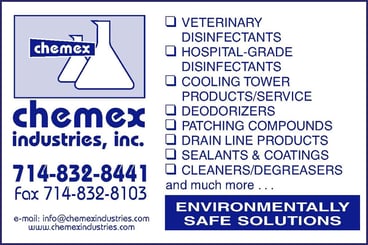The Answer to Free-Flowing Condensate Drain Lines
Why is this Protocol Necessary?
The most obvious reason is leaking water that flows from areas beneath the cold food storage areas; both frozen food and cool: e.g. ice cream, dairy & eggs.
Aside from wet flooring that is unappealing to shoppers, its also a likely slip and fall hazard. – That can result in hundreds of thousand dollars, per incident. As we continue this discussion, you’ll realize that the wet floor is not comprised of potable water. In fact, the liquid mess most likely harbors pathogenic microorganisms.
More problems – More potential lawsuits.
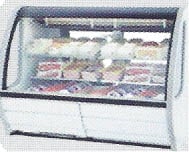
Condensate
- Supermarket refrigerated display cases rely on the HVAC process to transfer heat and to keep their products cold. The process of cooled air flowing over the product, removes heat and is calculated to maintain the product at the desired temperature.
- Most forced-air circulation meat cases, use air at approximately 28 F. But, in order to maintain the product at that temperature, a lot of air must flow over it. As the volume of air flowing over the product increases, so too does evaporation from the surface of the product. Evaporated moisture from the product is carried away as water vapor to the coil where it freezes and forms frost.
- Moisture that helped to maintain freshness and case humidity gets frozen on the coil. When the case goes into defrost, the frost melts and drips to the bottom of the case and down the drain.
- It’s obvious that any impurities, contacting the coil, will have the potential for bacteria growth. The condensate now developing in and on the pan, will contain these emerging microorganisms.
Misting Systems
- Misting systems, designed to keep vegetables and foods fresh and reduce moisture loss, will allow food waste to be dispersed, and form on the coil.
- Seafood is often a cause agent, for this type of spread of contamination.
- Ice that has formed, in and around foods, will also be detrimental, if it melts and contacts the coil.
How does the biofilm form in supermarket display cases?
In food retail, the problem of biofilm starts within the food display chillers. - Airborne microbes land on the coil where the process begins its expensive lifespan.
The microbial mass finds an ideal breeding environment, and if it were practical, it could be arrested here. Cleaning and disinfecting of the coil would kill the microbes before they form biofilm. Unfortunately, this intensive process would need to be carried out daily, to be effective. In food retailing this is just not practical. The reality is that keeping the coil clean is not operationally practical.
How do bacteria form in the Condensate Drain Pan?
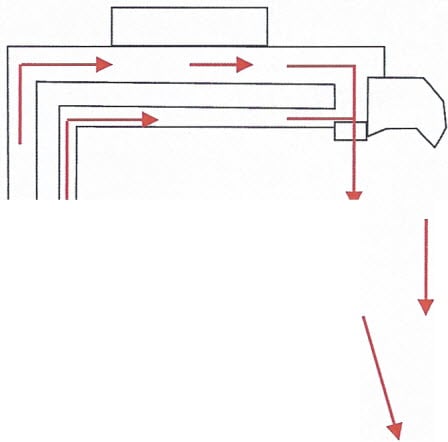
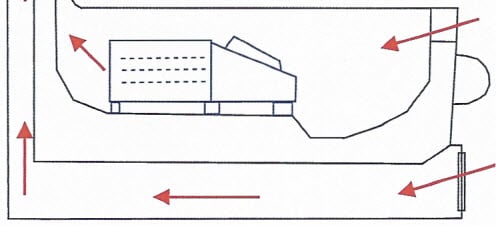
As the coil transfers heat, moisture drips off the fins down to a collector or drip pan, where it is drained away as condensate wastewater. It is here that the bacteria secrete a polysaccharide jelly, rapidly growing and multiplying in days. The jelly/mass is very resilient, resisting penetration of cleaning agents including many antimicrobial agents.
As the jelly builds, usually where the waste water becomes static, or slow moving on its route through the case plumbing and drains, it blocks the drain line, causing the display case to hold water and then leak.
The leaking water contains many pathogenic organisms, including Legionella, E-coli and listeria.
The system's fan will propel these pathogenic organisms into the building, in the form of tiny droplets (aerosolized), causing serious medical issues.
You can review an EPA article on this topic - See Lesson Four
Additional Headaches...
The water level in the blocked display case can also reach the fan motors and destroy them, causing additional costly damage and down-time.
Ancillary damage to the case and components (corrosion), reduces the lifespan of the display case and its efficiency.
Food loss is of course, another casualty.
If We Keep our Cold Food Merchandising Coolers Sanitary, why is there a problem?
The typical refrigeration unit operates between 33-38 degrees F. The unit will usually have a bottom mounted compressor. Typical construction is white anodized aluminum, with a stainless steel floor.
There a two (2) completely different families of bacteria: pathogenic bacteria, the kind that cause food borne illness and spoilage bacteria, the kind of bacteria that cause food to deteriorate and develop unpleasant odors, taste and textures.
Bacteria and Spoilage
Pathogenic bacteria can grow rapidly in the “danger zone”, the temperature range between 40 F. and 140 F. However, they do not generally affect the taste, smell or appearance of a food. In other words, one cannot tell that a pathogen is present.
Power outages, when temperatures will increase, can be a cause of food spoilage.
Any contamination can and will form on the coil.
Damage to Your Cooler
The seams and areas of the frame of the display units can be compromised by pressure washing, as well as with contact with alkaline and acidic substances. Any areas effected will allow the entry, or access for the foodstuff to enter the underbelly of the cooling system. Yes, leakage from tomatoes, orange juice and many foods are potentially corrosive to your refrigeration systems.
Is the regular operation of the Cooling System, an area of concern?
All air handling systems, including supermarket refrigeration displays, can contribute to the growth and spread of disease-causing agents.
The primary reason is the condensate drain pan, that’s intended to allow the transport of water, to the drain.
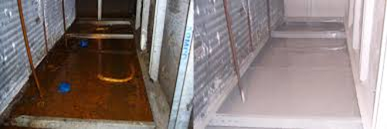
Related Problems
- Slime Build-Up, that blocks the drain access and the consequent drain pan overflows
- The growth of harmful bacteria, including those causing Legionnaire's disease
- Musty odors introduced into air handling systems, caused by bacterial slime accumulations – sick building syndrome (SBS), with acute health effects
Finally an ANSWER to this Problem!
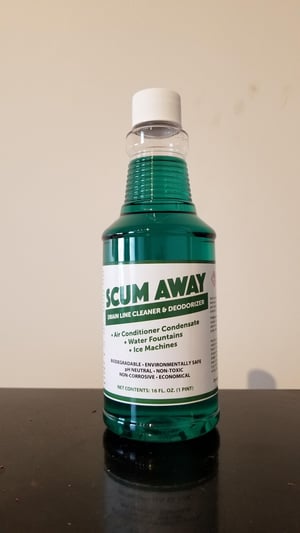
Look no further than Scum Away, to help solve the ongoing problem related to airborne illness (mold/mildew), clogged condensate drains, water overflow & water soaked floors.
Avoid Overflows onto your foot- traffic areas
Remove the odors in and around the display cases
- Active ingredients include dual Quaternary ammonium and surfactants to break through biofilm and safely eliminate the cause agents.
- Very Safe to Use
- Non Flammable Solution
- Economical
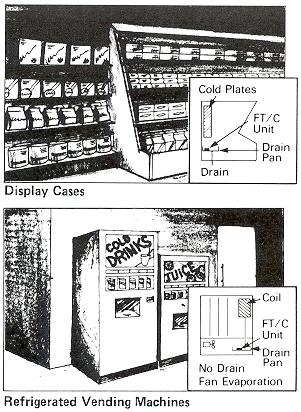
See Technical Data for Scum Away HERE
See More Information regarding Condensate drain pan issues HERE
